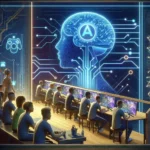Video editing has evolved from a niche technical skill to an essential creative discipline that powers everything from social media content to Hollywood blockbusters. In this fast-paced digital landscape, efficiency isn’t just a luxury—it’s a necessity. Professional video editors understand that mastering timeline shortcuts can dramatically transform their workflow, turning hours of tedious clicking into seconds of fluid motion.
The Foundation of Efficient Video Editing
Timeline shortcuts represent the backbone of professional video editing efficiency. These keyboard combinations and mouse gestures allow editors to navigate, manipulate, and refine their projects with unprecedented speed. Understanding these shortcuts isn’t merely about working faster—it’s about maintaining creative flow and reducing the technical barriers between your vision and its realization.
Modern video editing software has become increasingly sophisticated, offering hundreds of potential shortcuts and customization options. However, not all shortcuts are created equal. The most impactful timeline shortcuts fall into several key categories: navigation, selection, trimming, and playback control.
Universal Timeline Navigation Shortcuts
Regardless of your preferred editing platform, certain navigation principles remain consistent across professional video editing applications. The spacebar serves as the universal play/pause toggle, while the J, K, and L keys form the holy trinity of playback control.
The J-K-L playback system deserves special attention for its intuitive design. Pressing J plays the timeline backward, K pauses playback, and L plays forward. Multiple presses of J or L increase playback speed, allowing editors to quickly scrub through footage at various speeds. This system enables rapid content review without relying on mouse-dependent timeline scrubbing.
Arrow keys provide frame-by-frame navigation, with left and right arrows moving one frame backward or forward respectively. When combined with modifier keys, these shortcuts become even more powerful. Shift + arrow keys typically jump between edit points, while Alt/Option + arrow keys might move between markers or specific timeline elements.
Timeline Zoom and View Management
Effective timeline management requires mastering zoom controls that allow editors to work at both macro and micro levels. The plus and minus keys universally zoom in and out of the timeline, while specific key combinations can fit the entire sequence to the timeline window or zoom to a selected area.
Many editors overlook the power of timeline view shortcuts, which can instantly switch between different track heights, waveform displays, and thumbnail views. These visual adjustments significantly impact editing efficiency, especially when working with complex multi-track sequences.
Selection and Marking Shortcuts
Precise selection forms the foundation of efficient editing, and timeline shortcuts excel in this area. The selection tool shortcuts vary between applications but generally follow logical patterns. The V key typically activates the selection tool, while specific tools like the razor blade or slip tool have their own dedicated shortcuts.
Marking shortcuts revolutionize the editing process by allowing editors to set in and out points without interrupting their review flow. The I and O keys universally set in and out points, while variations like Shift+I and Shift+O might clear these marks or set them at specific locations.
Advanced selection techniques include selecting all clips to the right of the playhead, selecting all clips in a track, or selecting clips based on specific criteria. These shortcuts become invaluable when working with complex sequences containing dozens or hundreds of individual clips.
Track Selection and Targeting
Professional editing often involves working with multiple video and audio tracks simultaneously. Timeline shortcuts for track selection and targeting allow editors to quickly specify which tracks should be affected by their actions. Common shortcuts include number keys for track selection and modifier combinations for targeting specific track types.
Trimming and Edit Point Shortcuts
Trimming represents one of the most time-consuming aspects of video editing when performed manually. Timeline shortcuts transform this process into a fluid, precise operation that maintains creative momentum.
The comma and period keys typically serve as trim shortcuts, allowing editors to extend or shorten clips by single frames. When combined with modifier keys, these shortcuts can perform more dramatic trims or affect multiple clips simultaneously. Some applications use bracket keys for similar trimming functions.
Ripple editing shortcuts deserve particular attention for their ability to maintain sequence timing while making adjustments. These shortcuts automatically move subsequent clips to accommodate changes, preventing gaps or overlaps in the timeline.
Advanced trimming techniques include slip and slide edits, which allow editors to adjust clip timing and positioning without affecting overall sequence length. While these techniques require practice to master, their corresponding shortcuts can dramatically improve editing precision.
Insert and Overwrite Shortcuts
The distinction between insert and overwrite edits fundamentally affects timeline structure, and shortcuts for these operations prevent costly mistakes. Insert edits typically use comma or specific function keys, while overwrite edits use different key combinations.
Understanding these shortcuts prevents common editing errors and allows for more sophisticated sequence construction. Professional editors often develop muscle memory for these operations, enabling rapid content assembly without conscious thought about the underlying mechanics.
Platform-Specific Shortcuts
While universal principles apply across editing platforms, each major application has developed its own shortcut philosophy and implementation.
Adobe Premiere Pro Timeline Shortcuts
Premiere Pro offers extensive customization options for timeline shortcuts, allowing editors to create personalized workflows. Key shortcuts include Ctrl/Cmd+K for adding cuts, Ctrl/Cmd+Shift+K for adding cuts to all tracks, and various modifier combinations for different trim types.
Premiere Pro’s multicam editing shortcuts deserve special mention for their complexity and power. These shortcuts allow editors to switch between camera angles, sync multicam sequences, and perform complex multicam operations without leaving the timeline.
Final Cut Pro Timeline Navigation
Final Cut Pro’s magnetic timeline introduces unique shortcut considerations not found in track-based editors. The blade tool (B key) and position tool (P key) work differently in this environment, requiring editors to adapt their workflow accordingly.
Final Cut Pro’s compound clip and storyline shortcuts offer powerful organizational tools that can dramatically improve project structure when properly utilized.
DaVinci Resolve Timeline Efficiency
DaVinci Resolve combines editing with color correction and audio post-production, creating unique shortcut requirements. The application’s timeline shortcuts often integrate with color and audio tools, allowing for seamless workflow transitions between different post-production phases.
Advanced Timeline Techniques
Beyond basic shortcuts, advanced timeline techniques separate professional editors from enthusiasts. These techniques often combine multiple shortcuts in sequence or use shortcuts in conjunction with specific workflow methodologies.
Keyboard-only editing represents the pinnacle of timeline efficiency, where editors can perform complex operations without touching the mouse. This approach requires extensive shortcut knowledge but results in unprecedented editing speed.
Custom shortcut creation allows editors to adapt their tools to specific project requirements or personal preferences. Most professional applications support extensive shortcut customization, enabling the creation of highly specialized workflows.
Workflow Integration
Timeline shortcuts become most powerful when integrated into broader workflow methodologies. Professional editors often develop standardized approaches that combine shortcuts with organizational systems, naming conventions, and project structures.
The most effective timeline shortcuts support rather than dictate creative decisions. They should feel invisible during the editing process, enabling editors to focus on storytelling rather than technical operations.
Developing Shortcut Mastery
Mastering timeline shortcuts requires deliberate practice and gradual implementation. Attempting to learn all shortcuts simultaneously often leads to confusion and decreased productivity. Instead, professional editors recommend focusing on one category at a time, building muscle memory before progressing to more complex operations.
Practice exercises specifically designed for shortcut development can accelerate the learning process. These exercises might involve editing simple sequences using only keyboard shortcuts or performing specific operations within time constraints.
Consistency in shortcut usage proves more valuable than memorizing every possible combination. Editors who consistently use a smaller set of shortcuts often outperform those who sporadically use larger shortcut vocabularies.
Customization and Personal Workflow
The most effective shortcut setups reflect individual editing styles and project requirements. Editors working primarily with dialogue might prioritize audio-related shortcuts, while those focusing on action sequences might emphasize visual effect and transition shortcuts.
Regular workflow evaluation helps identify shortcut gaps and optimization opportunities. Professional editors periodically review their shortcut usage, identifying frequently performed operations that lack efficient shortcuts.
Future-Proofing Your Shortcut Knowledge
Video editing technology continues evolving rapidly, with artificial intelligence, cloud-based editing, and virtual reality creating new workflow requirements. However, the fundamental principles underlying effective timeline shortcuts remain consistent across technological changes.
Focusing on universal concepts rather than application-specific implementations helps editors adapt to new tools and platforms. The cognitive patterns developed through shortcut mastery transfer effectively between different editing environments.
Emerging technologies like voice control and gesture-based interfaces may supplement traditional shortcuts but are unlikely to replace them entirely. Professional editing requires the precision and speed that only keyboard shortcuts can provide.
Conclusion
Timeline shortcuts represent far more than simple time-saving techniques—they embody the difference between struggling with tools and wielding them as extensions of creative intent. Professional video editors who master these shortcuts find themselves freed from technical constraints, able to focus entirely on the creative challenges that define exceptional video content.
The investment required to master timeline shortcuts pays dividends throughout an editor’s career. As projects become more complex and deadlines more demanding, the efficiency gained through shortcut mastery becomes increasingly valuable. Whether you’re editing social media content or feature films, these fundamental skills form the foundation of professional video editing excellence.
Remember that shortcut mastery is a journey rather than a destination. Even experienced editors continue discovering new techniques and optimizations that enhance their workflow. The key lies in consistent practice, gradual implementation, and maintaining focus on how these tools serve your creative vision rather than becoming ends in themselves.







Leave a Reply